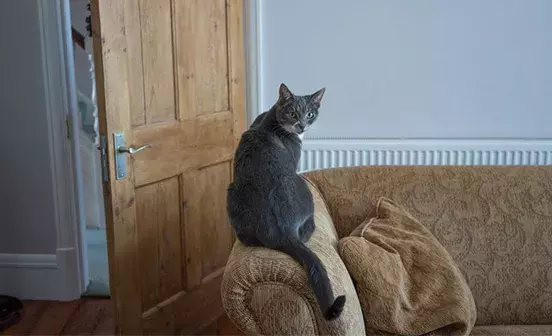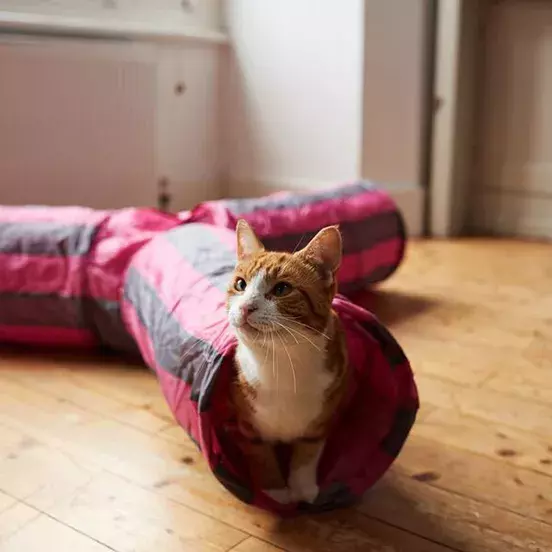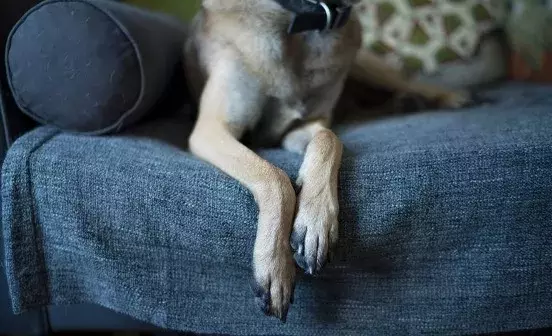Cats and dogs are sometimes thought of as enemies, but with some careful planning, that’s not always the case. However, some dogs are better suited to living with cats than others.
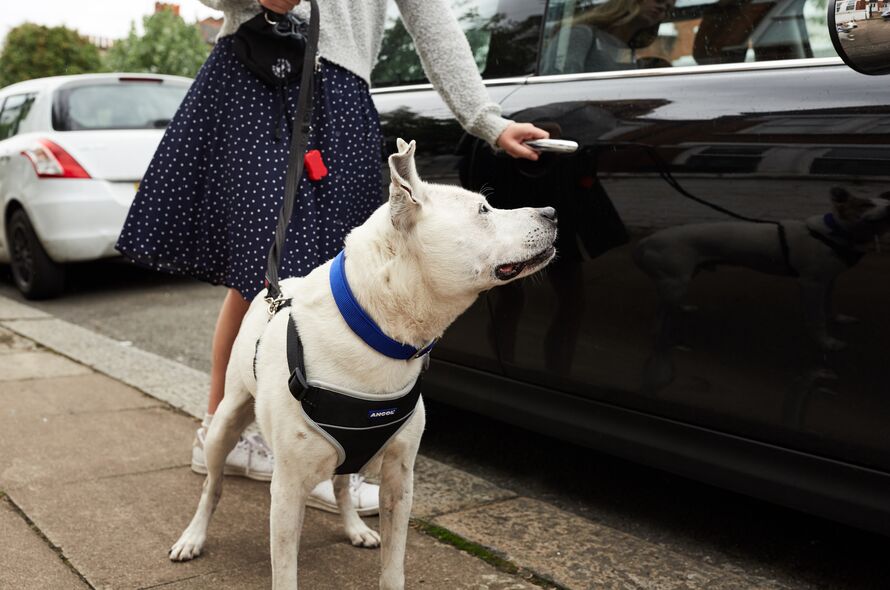
Staff at a rescue centre will take your dog’s history and behaviour into account before deciding whether or not they could potentially live with a cat, and it’s important to consider different personality traits before bringing a dog into a household with a cat. It’s important to be safe and to set both animals up for success right from the start as first impressions will definitely count.
BEFORE YOUR NEW DOG COMES HOME
To minimise the stress a new dog could have on your cat, you should try to keep them completely separate within your home for at least two to three weeks before beginning careful introductions. This time allows your new dog to start to settle into their new environment and essentially, to calm down. This will involve making sure different areas of the house are only available to either one of the animals for this time while they both adjust. Preparation around the house should ideally take place at least a week before your dog comes home so your cat is already used to the new routine.
Create a safe space for your cat away from the dog’s designated area. The easiest way to achieve this is to split you home in to a “cat zone” and a “dog zone”. Be mindful of where your cat spends the majority of its time already and try to establish this as the “cat zone”. If this is not possible, then any changes to the cat’s areas should be made well in advance of the dog coming home to allow the cat to adjust to their new set-up and routine. For flats/bungalows, the cat would ideally have its own room, but wherever they are they will need access to all their usual resources like food, water, a litter tray, their bed and scratching post.
- Try to make higher-up spaces like shelves/cabinets/tops of wardrobes etc available and safe for your cat as places they can retreat to or use as escape routes.
- Baby gates are a great way to section off areas of the house e.g. on the bottom of the stairs to prevent the dog going into the cat’s safe space, if it’s upstairs.
- Add a second food and water bowl for your cat in a different area of the house (perhaps upstairs, if this is an option) and give them a temporary litter tray as well. Add an additional litter tray if they already have one in the home. This takes the pressure off the cat to leave their safe space to go outside to go to the toilet before they are ready to meet the dog. If your cat has a preference for going to the toilet outdoors, try to ensure they still have safe access to do so.
-
Plug-in diffusers like the brands Feliway and Adaptil give off synthetic pheromones for cats and dogs respectively. These pheromones are designed to ease anxiety and can help towards your cat and new dog feeling more comfortable during the settling in period. As the pheromones these diffusers give off target different receptors in cats and dogs, they are safe to be used together in the home and do not interfere with one another. Be sure to set up your cat’s diffuser in the area where your cat will be spending the majority of its time indoors; the same advice applies when placing your dog’s diffuser in the home. These diffusers are effective for up to 4 weeks, so it is important to replace them regularly if they are needed for longer-term support.
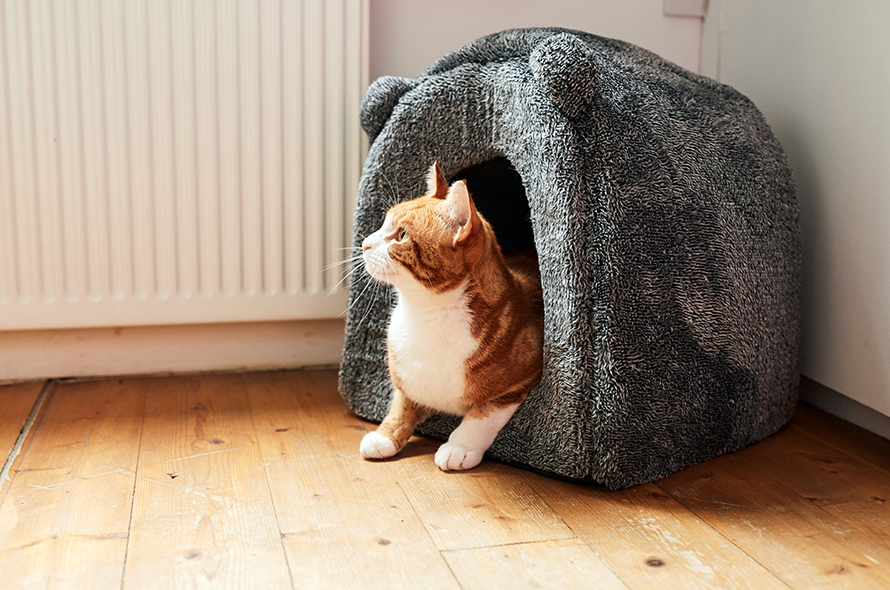
WHEN YOU BRING YOUR NEW DOG HOME
- Before you leave to collect your new dog and bring them home for the first time, make sure your cat is safely in their safe space/room so they aren’t right on the other side of the front door when you arrive with your new addition! It is very difficult for the relationship between a cat and a dog to recover if they have had a negative interaction early on, so prevention is key.
- Once your new dog has arrived home, start swapping blankets between your cat and dog on a daily basis so they can get used to one another’s scent without any additional pressure on either animal. You can always ask to start this process off before they come home by seeing if you can place a blanket with your cat’s scent in the dog’s kennel or space and asking to take a blanket with your dog’s scent home for your cat.
- It takes an average of three weeks for a dog to destress and start settling into their new environment and routine, so don’t be tempted to rush introductions to the cat after the first few days.
INTRODUCING YOUR NEW DOG TO YOUR CAT
After your dog has had the chance to settle in for the first few weeks, you can start to think about slowly widening the cat and dog ‘zones’. This process should be done carefully over time, and initial greetings should always be conducted with your dog on the lead, and ideally behind a barrier such as a baby gate. Dogs find chewing very relaxing, so giving your dog a long-lasting chew could help keep them calm and occupied when your cat appears, which in turn could help your cat acclimatise to the dog. Remember, this could take time, but it’s important to make sure both your dog and cat are as calm and comfortable as possible at all times. Watch for both their reactions or have another person your cat is familiar with on hand to observe them and let you know if they seem stressed or anxious.
STEP ONE: SET UP THE SPACE
Calmly set things up so you are on one side of a barrier such as a baby gate with your dog on the lead, and your cat is on the other side. Have some of your dog’s favourite treats on hand – try chicken, cheese or hot dogs as these are tasty, high value foods that most dogs will want to pay attention to you for. Don’t force your cat into a situation, ideally wait until they have chosen to rest somewhere that’s not their safe space, and then calmly introduce the barrier and bring your dog to them. Always make sure that your cat has escape routes and is able to quickly and safely remove themselves from any situations they may find uncomfortable.
STEP TWO: KEEP YOUR DOG CALM AND REWARD POSITIVE BEHAVIOUR
As soon as your dog spots the cat, calmly mark them looking at the cat with a “yes” or “good” (stay consistent with your marker word), pop a tasty treat in front of their nose and see if they will eat it. Look out for their reaction; they might be calm, or they might be whining, stressed, excited, or barking. Look and see if they have abandoned their chew completely or gone back to it. If your dog seems alert and very interested in the cat, call their attention to you and lead them further away from the barrier and the cat to a distance where they are better able to remain calm. Gently move them with the lead if necessary, then reward them with a treat. Allow them to choose to look at the cat if they want to, and then repeat this process.
Initially your dog will only be looking at the cat very briefly before you mark the behaviour and then reward them for remaining calm. Progress at your dog’s (and cat’s) pace and slowly build up the amount of time before you call your dog’s attention away and reward them for their calm behaviour.
STEP THREE: KEEP YOUR DOG'S ATTENTION
If your dog is too fixated on your cat to choose to look at you when called, try holding a tasty treat right under their nose and guiding their attention away from the cat and on to you. Reward your dog for switching their attention to you and if possible, move away to create a greater distance between the dog and the cat, and repeat the process.
Eventually, you can wait quietly and see if your dog will choose to look backwards towards you and away from the cat without calling them. If your dog looks back on their own, praise them heavily and reward with a tasty treat.
STEP FOUR: REMOVE THE LEAD, BUT KEEP THE BARRIER
When your dog is calm in the situation, and reliably able to look away from the cat and back to you, you can try and get and hold their attention again, this time without the lead, but keeping the added security of the divider. Getting to this stage could take a few days, weeks or months depending on the dog, and it’s very important for both your animals that you don’t rush this.
STEP FIVE: MAKE SURE YOUR DOG IS CALM
It is important to read the rest of your dog’s body language to determine if they are truly calm. They might still be on high alert but happy to look back at you for a treat. Until your dog is truly calm and relaxed in the presence of the cat behind the baby gate, you should keep them on lead. Using a long line lead is a good middle ground between being on a fixed lead and being off lead completely, allowing you to retain physical control over your dog without having to grab at their collar should they rush forward. We’ve got more advice about long-line leads in the Pet Advice section of the Battersea website.
STEP SIX: REMOVING THE DIVIDER
When your dog is able to consistently remain calm when they’re off the lead and able to see the cat through a divider you can remove it, but make sure your dog is put on the lead for the first true “face to face” greet. Once you’ve moved the barrier, repeat the steps above allowing your dog to observe the cat while you mark and reward them for remaining calm. You may find you have to go backwards, with your dog only able to remain calm for short periods of time initially, but you can then slowly build up the amount of time they are able to remain calm as you’ve already done.
Again, always make sure that your cat has escape routes and is able to quickly and safely remove themselves from any situations they may find uncomfortable. It is highly recommended that all dog-cat interactions are supervised by a responsible adult, no matter how positive the relationship between the two.
If you are still concerned about your dog’s behaviour around your cat after practising these steps for several weeks, you may find it useful to seek the help of a qualified canine behaviourist. Often having a professional visit the home environment and witness the behaviour first hand can help identify areas where training can be tailored to your specific situation.
What to do if the first meeting with your puppy and cat doesn't go smoothly:
- Don’t force more contact between them - give both your cat and puppy space to decompress.
- Separate them safely and allow time to calm down. Build up slowly with future introductions and keep them controlled.
- Use barriers (like baby gates or crate setups) so they can see/smell each other without full access.
- Rebuild slowly: Short, positive sessions with treats, praise, and calm behaviour.
- Watch their body language: Any signs of stress (e.g. growling, hissing, barking, stalking) mean it’s time to take a break.
- Don’t punish either pet as this can just create fear. Instead, focus on calm reinforcement.
- If there’s still tension, we’d recommend speaking to a qualified behaviourist who can give you tailored support. You can call Battersea's Behaviour Advice Line on 020 3887 8347 or email dog.behaviour@battersea.org.uk.
Download this guidance as a handy advice sheet:

